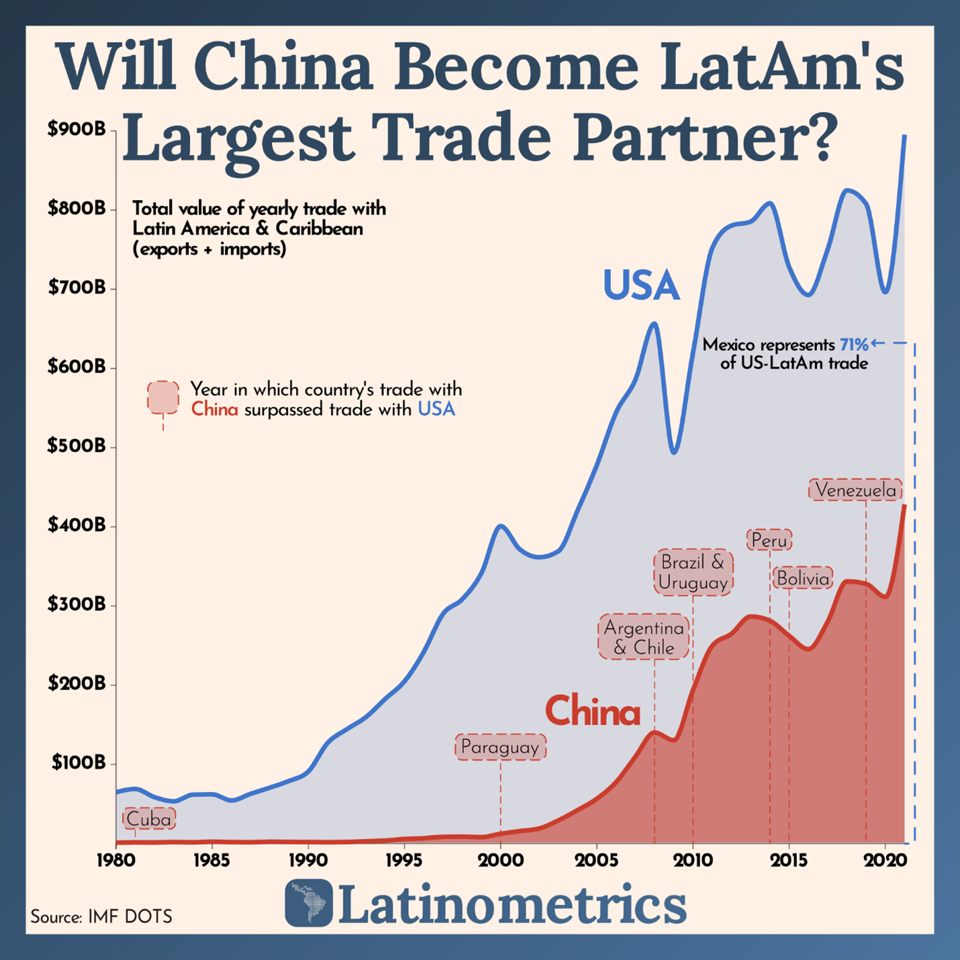Redefining The New Global Architecture In Solar Energy: The US, LAC, And China
time:2023-09-27 09:14:25 Views:0 author:Jinan Freakin Power Ltd.
Winning the renewable energy race is essential to who controls the narrative and sets global standards. From the annual UN General Assembly meetings to the G20 and The BRICS to (now the “Expanded BRICS”) highlight how nations place importance on developing alternative forms of energy— solar being a key example— and creating competitive ecosystems are redefining traditional and non-traditional industries and geopolitical alliances. This is the new global architecture in solar energy. Dynamics in the Western Hemisphere, a once bastion and a symbol of America’s global influence, have changed in the past two decades. A lack of concerted attention from the U.S. government and private actors has prompted Latin America and the Caribbean (LAC) governments to look east for development assistance and a more reliable trade partner. On September 13th, Chinese President Xi and Venezuelan President Maduro upgraded their relationship to an “All weather strategic partnership” and signed agreements in economy, trade and tourism, science and technology, civil aviation, and aerospace. The lure of Chinese capital is too attractive for nations in the region to ignore. Data from the IMF, show for two decades, China has surpassed the United States as South America’s largest trading partner.

However, trade data from the World Bank suggests that The US is still Latin America’s largest trade partner. Who should the public believe? What is certain is China’s intentional and sustained economic engagement in LAC evidenced by more than USD 137 billion in sovereign loans to Latin American countries since 2005, notes Margaret Myers, Director of The Asia and Latin America Program at The Inter-American Dialogue.
LAC’s exports to China rose from 1.3 percent in 2000 to 14.5 percent in 2020. China also set up three regional funds to back investments in the region: the China-LAC Industrial Cooperation Investment Fund with a size of US$30 billion; the China-LAC Cooperation Fund of US$10 billion; and the Special Loan Program for China-Latin America Infrastructure of US$20 billion. In response to increased Chinese engagement with LAC, the U.S. has increased investment and attention to the region, and competition particularly in solar power is acutely intensifying.
LAC’s voracious appetite for investment in renewable energy is palpable. It averages 217 days of sunshine a year and Solargis’s resource map shows that the region ranks high in PV electricity potential. Solar power currently only generates 3-4 percent of electricity across LAC. However, LAC has the most extensive solar power project lineup outside East Asia and North America. The region is constructing over four times the amount of solar capacity in Europe and seven times more than India. Global Energy Monitor, states that Latin America has the potential to increase its wind and solar power capacity by more than 460 percent by 2030. As climate change increases the frequency of devastating storms, it is imperative that LAC ensure continued power generation through domestic means. For example, after Hurricane Irma devastated the Bahamas, the government created solar power microgrids to provide residents renewable energy on Ragged Island.
Brazil, Mexico, Colombia, Chile, and Peru represent the majority of current solar projects and account for over 88% of installed solar capacity and about 97% of planned capacity in construction. However, there is still time for the U.S. to get a piece of the action.
Solar power is the fastest-growing and most affordable source of electricity in America. In 2022, more than 263,000 Americans are working in solar at over 10,000 companies and the industry generated nearly $35 billion in private investment. Aiming to capitalize on this investment, American developmental aid organizations emphasize Environmental, Social & Governance (ESG) focused investment.
China holds a considerable advantage over the U.S. in its solar production. It represents over 80 percent of the supply chain and has spent ten times as much on solar manufacturing compared to the U.S. and Europe. Data from Boston University’s China Global Energy Finance database, show that China’s developmental finance institutions like the China Development Bank and China Export-Import Bank, have provided $10 billion in funding for energy generation in LAC since 2000. Many of these projects are run by state-owned firms, such as PowerChina, which has over fifty ongoing projects in Latin America as of 2022.




